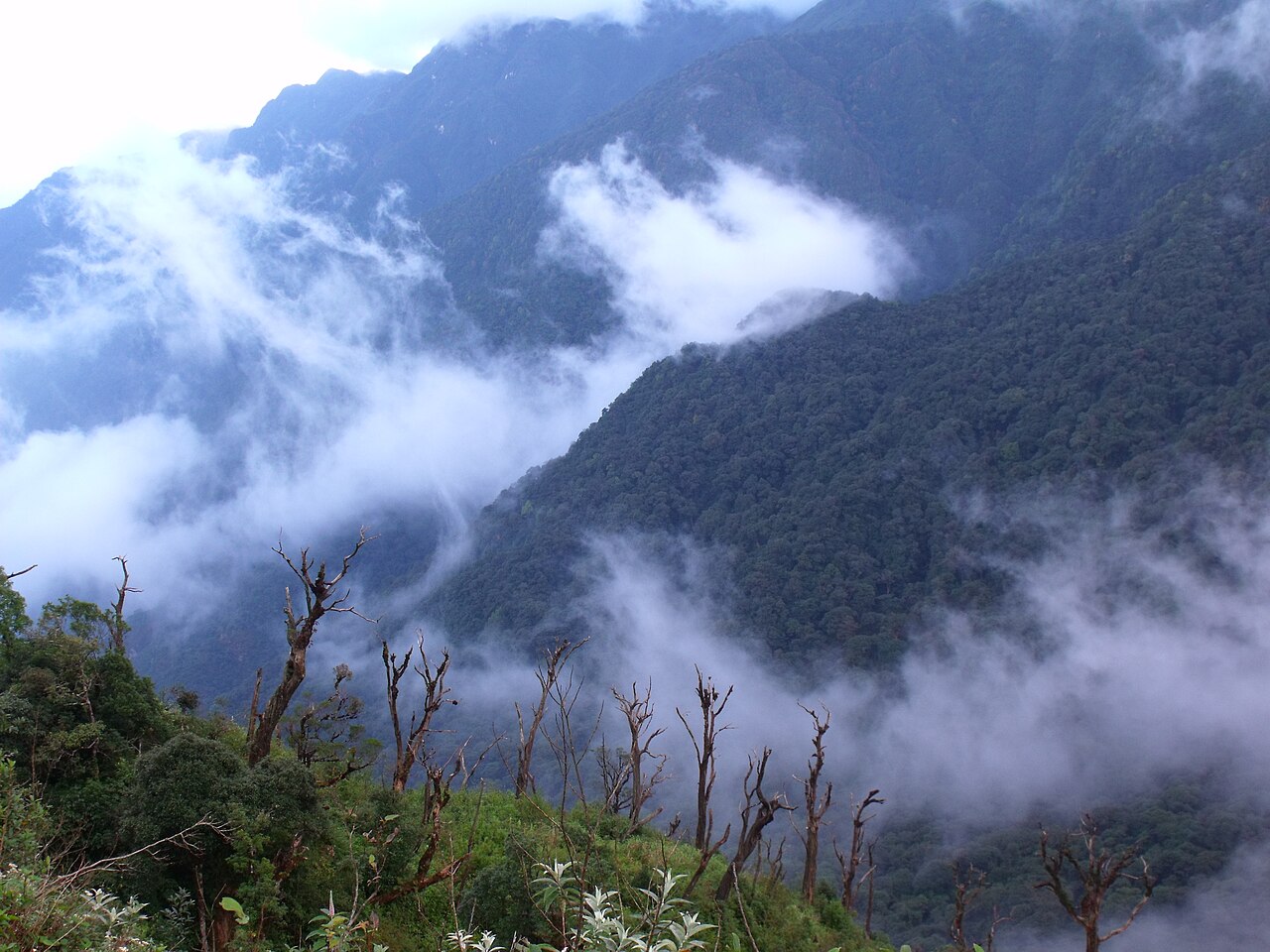
Part of Hoang Lien National Park seen from the climbing route from Tram Ton to Fansipan peak
Hoang Lien National Park was established in 2002 and was assigned to manage with a total area of 28,509 hectares, located in the territory of Lao Cai and Lai Chau provinces, divided into 3 sub-zones, including: Strictly protected sub-zone; Ecological restoration sub-zone; Administrative service sub-zone. The buffer zone area is 67,395 hectares (Inner buffer zone 1,372 hectares; Outer buffer zone 66,023 hectares). The park has a strongly fragmented terrain that is quite diverse and complex, consisting mainly of high and medium mountains, many peaks are over 2,000m high, the highest is Fansipan peak at 3,143 m high. The climate is cold temperate with two typical seasons, humid summer; cold winter, many times the temperature drops below 00C and there is ice and snow. Hoang Lien National Park is home to 08 ethnic groups, of which the Mong people account for about 37.6%, the Thai people account for 36.4%, the Dao people account for 6.5%, the rest are ethnic groups such as Tay, Day, Kho Mu, Lao, Kinh.
On April 15, 2006, Hoang Lien National Park (Lao Cai) was recognized as an ASEAN Heritage Park. This honor is a long journey of efforts to protect the natural resources of the Hoang Lien Son mountain area over the past two decades.
Due to the special characteristics of the terrain and climate, the flora in Hoang Lien National Park is quite rich and has many unique features, with subtropical and temperate mountain flora components. According to scientists, this is one of the most biologically diverse centers in Vietnam, especially the forest flora. Through the results of investigation and assessment by domestic and foreign scientists, it has been recorded that there are 2,847 species of vascular plants, belonging to 1,064 genera of 229 families, in 6 plant branches. Of which, there are 149 rare species, the number of plant species in the Vietnam Red Book is 133 species, 16 species are in the group at risk of extinction worldwide. Up to now, 6 tree populations have been recognized as heritage tree populations, including: Fansipan Spruce Tree Population; Rough-branched Rhododendron; Guava Tree; Ironwood; Rhododendron and Red Light.
In particular, this is also an ideal area for many orchid species to grow and be unique with 172 orchid species, including many rare species with economic value enough to affirm that no place in Vietnam has a rich orchid gene source like Hoang Lien National Park. With more than 30 species of Rhododendron flowers blooming all year round, especially around April, Hoang Lien National Park is considered a paradise of Rhododendron flowers. In the garden, there are also many precious medicinal plants such as Sam Vu Diep, Truc tiet Nhan Sam, Hoang Lien, Do Trong, Tho Hoang Lien, Dam Duong Hoac, which are medicinal plants that are not found anywhere else in Vietnam. Regarding animals, the garden has 555 species of terrestrial vertebrates, including 96 species of mammals; 346 species of birds; 63 species of reptiles and 50 species of amphibians, especially the very rare Spiny Frog that has just been discovered. Among them, there are species listed in the Vietnam Red Book. In addition, Hoang Lien National Park also has many beautiful species of insects and butterflies that are not only valuable for conservation but also for tourism and aesthetics.
Hoang Lien National Park is adjacent to Sa Pa tourist town, one of the key economic zones of Lao Cai province, attracting a large number of domestic and foreign tourists. With such conditions, this place has many advantages for the development of ecotourism associated with forest protection, but there are also many difficulties and challenges in forest management and protection, biodiversity protection and ecological environment protection, so the work of good management and protection of the assigned forest area is given top priority. In addition to forest management and biodiversity protection, scientific research activities and international cooperation are always of interest to Hoang Lien National Park. Scientific research activities to conserve the natural resources of the National Park are in the following directions: Gathering research from domestic and foreign organizations; Building specialized research programs on plants and animals, focusing on endangered species; Building a botanical garden not only contributes to the conservation of rare and indigenous genetic resources but also serves as a place for environmental education and tourism. The garden has applied biotechnology in the production of rare and indigenous plants to serve the needs of afforestation and socio-economic development of the locality… Calling for, encouraging and attracting investors, sponsors, and domestic and foreign organizations also partly contributes to the development of the garden.
Source: Department of Natural Resources and Environment



